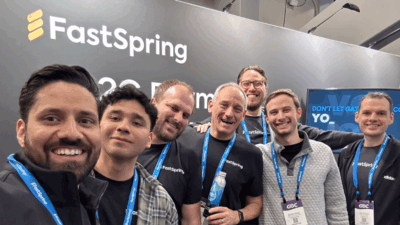Right at this moment, millions of people are making ecommerce decisions based on recommendations from people you’ve never even heard of: YouTubers, Instagrammers, Yelp reviewers, reality TV show contestants, and more.
In fact, some marketers are calling 2018 “the year of the influencer.” Online influencers – people who affect buyer behavior – make endorsements that send droves of fans straight into the shopping carts of ecommerce companies around the world. Wouldn’t it be great to have a popular influencer working for you?
Well … yes and no. It’s important that you land the right influencer, as the wrong one could drive the wrong leads or negative publicity. Here’s how to find the best influencer for your ecommerce store.
Types of Influencers
Long before there were Kardashians, there were princes and princesses. Aristocratic families have been trendsetters for hundreds of years. Today’s influencers are really just tech-infused versions of royalty – social media aristocrats who set ecommerce trends.
Marketers divide them into three categories:
Mega-influencers: Celebrities, athletes, models, TV personalities, and social media stars. Many of them are household names, like sports star LeBron James, but some are niche celebrities who still have millions of followers, like YouTube star Michelle Phan.
Macro-influencers: Bloggers, journalists, entrepreneurs, and other writer/professionals fall into the category of micro-influencers. They’re usually followed because of who they’re affiliated with, like major media outlets and successful companies. Nicholas Thompson, the editor in chief at Wired, is a good example.
Micro-influencers: Your company is filled with these influencers. They’re your employees, customers, and social media followers.
Influencer Pros and Cons
Of the three categories above, each comes with advantages and drawbacks. Mega-influencers come with mega-fans, but also mega-price tags. Celebrities don’t work cheap, and they can afford to be picky about brands, so it can be hard for smaller companies to come up with the cash or reputation to attract them.
Macro-influencers also have substantial social media followers but are often motivated by things other than money. Journalists are wary of outright endorsing products. CEOs might not want to distract from their own brands. Bloggers are open to endorsements, but may already have other deals in place.
Micro-influencers are easily accessible – many of them can be found right inside your doors – but don’t typically have millions of followers. You’ll need lots of micro-influencers to add up to the numbers of just one mega- or macro-influencer. Still, they can play a key role in your ecommerce marketing strategy.
Making the Right Match
So, how do you identify the perfect influencer (or influencers) for your business?
Gina Michnowicz, the CEO of media strategy company Union + Webster, recommends starting with your micro-influencers because they’re easily accessible, familiar with your company, and swayed by small sums of money. Just a moderate payment – or gift cards, or merchandise – could convince them to actively promote your brand.
Micro-influencers become an army of positive PR. As people encounter your brand on Twitter, Instagram, Yelp, and other channels, they see something upbeat, shared by a happy micro-influencer.
This kind of “thinking small” is a good start, but it’s not the path to massive influence. You’ll also need to branch out into macro-influencers (or even mega-influencers) who can draw more people to your ecommerce store.
Start to identify them by making a list of your brand’s personality characteristics. Is your brand young, casual, and organic? Or is it macho, bold, and funny? These qualities should match the macro-influencers you seek out for contractual arrangements.
Who Should We Woo?
Now determine exactly who should be your next big influencer with some additional research.
- Track trends. Find trending posts that are relevant to your business, track down the original posters, and try to make deals with them. Buzzsumo is a great place to start browsing trends. You can set Google Alerts for words that relate to your store. You can even use Reddit to find influential posters, using a technique most infamously outlined by Sujan Patel.
- Think niche. If you sell architectural software, don’t just seek out world-famous architects. Think nicher than that. Maybe you appeal to eco-friendly architects on the east coast, and there’s a photographer/Instagrammer who’s into that. Use the category drop-downs in Google Trends to dig deep.
- Find famous followers. If you can’t afford a celebrity, maybe you can afford a celebrity follower. Many mega-influencers have follower/bloggers who themselves have lots of fans. Find them on Twitter, Facebook, Instagram, and other social channels. Hubspot offers tools for connecting with bloggers and SmartBlogger offers tips for standing out in the crowd of people who contact them.
Need more ideas for selling online and extending the reach of your product? Download our guide, What You Need To Know About Selling Online, to take a deeper dive.
![[Customer Story] Why TestDome Considers FastSpring a Real Partner](https://fastspring.com/wp-content/themes/fastspring-bamboo/images/promotional/2023/FastSpring-TestDome-blog-thumbnail.jpg)








